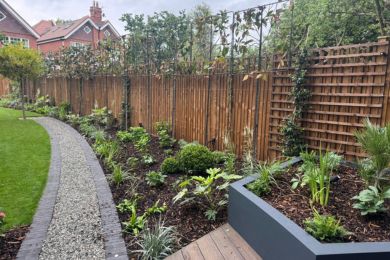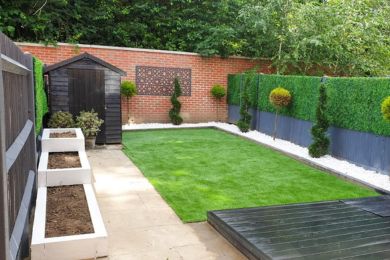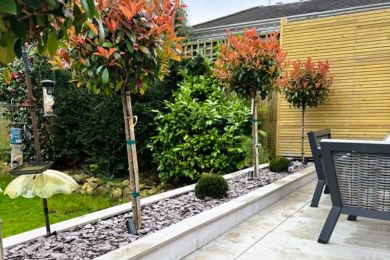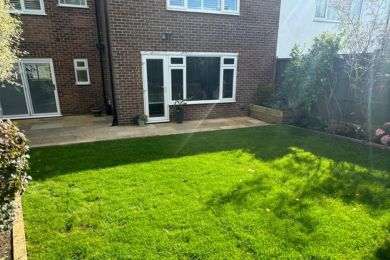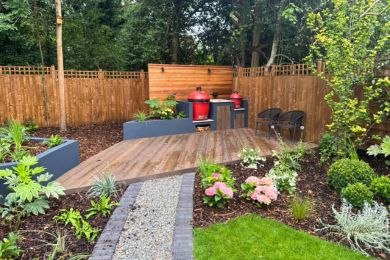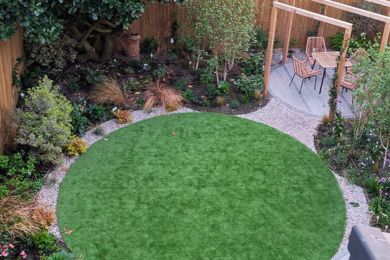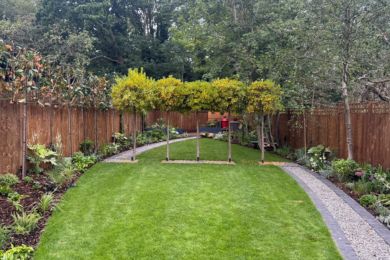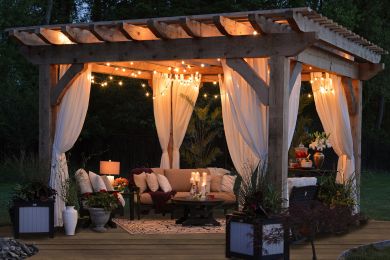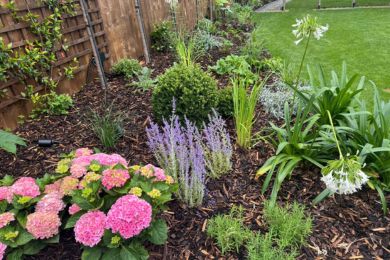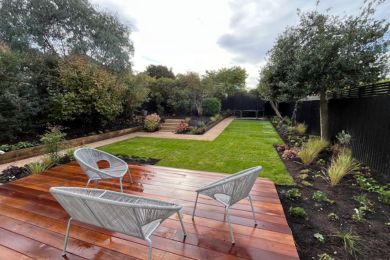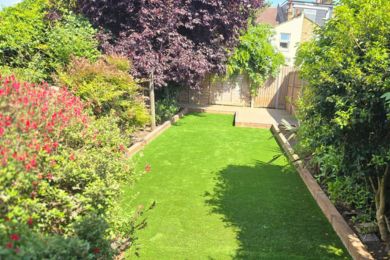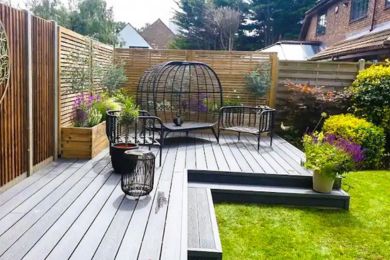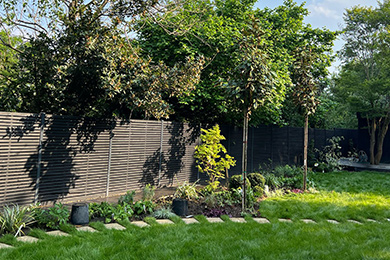Top Garden Focal Points To Highlight Outdoor Spaces
In garden design, a focal point is a standout feature that draws the eyes and grabs attention. Whether it is a sculpture, a water feature or even a structural plant, focal points are a way to add some personality to the landscape.
As a leading landscaping company, SilvaTree understands that each garden is unique and focal points are used to demonstrate this. No matter your garden design, property type, or personality, focal points can be used to represent your uniqueness and create a garden you love.
To make your garden stand out for the right reasons, focal points need to be considered and carefully placed. In this guide, we are sharing everything you need to know about garden focal points as well as recommending some of the best ideas to make your landscape as unique as you are.
What Is A Focal Point In Garden Design?
A garden focal point is a standout feature that naturally draws the eye and anchors the space, ensuring cohesive design and flow. Garden focal points are essentially the centre of attention in a landscape or area of the garden, and can take many forms.
Focal points can be anything from an ornate piece of garden furniture to a structural plant; a bespoke sculpture or water feature. They can be as complex or simple as you desire, as their main purpose of focal points is to complement your garden design.
While all elements of garden design aim to work together to create a cohesive outdoor space, focal points are the attention-seekers and the way to highlight specific areas or ideas. This is why finding a garden focal point that reflects you well and represents your personality, interest, or style is essential.
Popular Garden Focal Points: Where To Start In Garden Design
As there are many forms of garden focal points, getting started can seem complicated. To help you better understand what garden focal points are and their role, let’s explore some of the most common types used across landscapes.
You can walk into any well-designed garden and see focal points, such as:
- Water Features: Water features are a timeless example of garden focal points and can be used to add elegance, style and soothing ambient sound to your outdoor space. There are various forms of water features, including ponds, fountains, rills, and water bowls, all of which reflect light, opening up the garden, and can attract wildlife.
- Statement Trees or Shrubs: Colourful, large or uniquely structured trees and shrubs, such as Japanese maple, olive trees, or multi-stem birch, can be used across the garden as a highlight. These can be used to separate the garden into zones, or as the main parameter line in an outdoor space, separating it from the surrounding landscapes.
- Sculptures and Ornaments: Another classic example of garden focal points, ornaments can be customised to suit your unique garden style based on the materials and themes chosen. Bespoke options are also available for those with a higher budget or who want to take design a step further.
- Seating Areas: A beautifully placed bench or pergola can be a focal point in your landscape, such as at the end of a winding pathway or underneath a large tree. This is a great option for those seeking practicality and style.
- Containers or Topiary: These garden focal points are great for courtyards or smaller gardens, and allow you to combine planting with unique structures for multi-layered appeal.
How To Position Garden Focal Points For Maximum Appeal
To ensure your garden focal points have the right impact, you not only need to consider what kind of feature you’ll use but also where it will go. Focal points need to draw attention, but also be a cohesive part of the garden design to ensure flow. You do not want to overwhelm the existing structures and planting areas within your garden, while also ensuring that your garden focal point is in the eye-line of visitors.
Perfecting this balance can be tricky, but needs to be achieved to ensure your garden focal points are effective. There are several ways you can position garden focal points to ensure they get attention for the right reason, based on your landscape layout and garden design.
Alignment
A great way to ensure your garden focal point gets the right attention is to align its placement with the natural flow of your garden. Key areas for this include the entrance to your garden, view spots, and in or around seating areas. For example:
- Placing statement shrubs near the entrance of your garden, where they have to be noticed by everyone coming and going.
- Line benches and statement seating with hardscaping, such as at the end of your main garden pathway, or the side of patios
Symmetry Or Asymmetry
Based on the style of your garden, balance and uniformity may be a great way to draw attention to garden focal points. Symmetry is often used in contemporary or large outdoor spaces, because there is room to ensure everything is equal on both sides.
In these kinds of landscapes, features such as bespoke trees can be planted in the same pattern and position on both sides of the garden. Alternatively, smaller or traditional landscapes can benefit from asymmetry, which allows you to work with the natural flow of the space.
For asymmetrical landscapes, an uneven number of garden focal points should be used to avoid overwhelming the space and ensure that each element gets the deserved amount of attention. In many cases, one main focal point such as a bespoke sculpture or water feature is more than enough to tie the rest of the garden design together.
Sight From Indoors
To ensure that garden focal points are appreciated fully, consider whether they can be seen from inside your home. For example, whether you can appreciate the beautiful tree or colourful containers when inside your living room, conservatory or sunroom.
Garden focal points do not just have to be reserved for outdoor occasions, as you can appreciate the beauty from inside your home with careful positioning. When using this method to place garden focal points, make sure you are not blocking the rest of the view or any sunlight from within your home for maximum appeal.
Don’t Forget The Surroundings: How To Highlight Garden Focal Points With Landscaping
To prevent your garden focal points getting lost in your landscape, you need to design and maintain the surroundings for maximum effect.
This means maintaining the rest of the garden to ensure it is neat and attractive, as well as relying on other landscaping elements to draw attention in the right areas, such as:
- Framing Plants And Flowers: Use shrubs, flowers or ornamental grasses to frame garden focal points such as sculptures, seating or water features. These will draw the eyes through colour or movement, allowing people to appreciate your carefully considered focal point too
- Enhance Flow With Hardscaping: For large sculptural focal points, such as water fountains, ponds, or ornaments, design hardscaping to lead towards these areas. For example, create a winding stone pathway that leads to the water fountain or add an ornament at the end of your decking for maximum impact
- Add Lighting For Nighttime Appeal: Garden lighting, such as spotlights and uplights, can be used to keep attention on your focal points even when the sun goes down
Garden Focal Points For Small Gardens
If you are limited on space, you can still enjoy the benefits of garden focal points. You simply need to consider the placement and scale of these focal points more to ensure maximum impact without overwhelming the rest of your garden design.
Some of the best garden focal points for small outdoor spaces include:
- Vertical Features: Such as vertical planting, climbing flowers, wall art and mirrors installed to fencing or the side of the home to save ground space
- Compact Trees And Shrubs: Planted in containers or raised beds to draw the eyes upwards and maximise available space
- Single Focal Points: Using one garden focal point, such as a singular bold plant or sculpture, is a great way to highlight a specific area of the garden and ensure your focal point has the desired effect in small spaces
Conclusion
Garden focal points are a key element of garden design as they allow you to add personality and appeal to the landscape. Focal points are a way to draw attention to key areas of the garden and can come in many forms, ensuring there is something for everyone.
From natural elements such as structural trees and shrubs to bespoke water features or sculptures, garden focal points can make your outdoor space stand out for the right reasons. Finding the right garden focal point means considering your garden design and landscape size, as you want something to complement what you’re working with.
As well as finding the right focal point, the position of these elements plays a large role in their effectiveness. To maximise the potential of your outdoor space and ensure success with your garden design, work with professional landscapers like SilvaTree. We offer a comprehensive garden design service and can meet all requirements.
Contact Us Today
Ready to transform your garden? Contact the team today to learn more or get started.
FAQs
What is the best focal point for a small garden?
A simple, singular focal point such as a structural container, compact tree or wall-mounted mirror is the best option for small gardens, as they provide drama without overwhelming the space.
How do I choose the right focal point for my garden style?
To ensure your focal points complement your garden design, match materials, colours and forms. For example, contemporary gardens can benefit from monochromatic, geometrical garden focal points such as a sleek water fountain or a sphere metal sculpture, whereas a cottage garden can benefit from a bespoke bird bath or blossom tree.
Can I have more than one focal point in my garden?
Yes, but it is best to have one primary feature with smaller secondary ones elsewhere in the garden. Focal points aim to draw attention, and too many can confuse the eyes and defeat this purpose.

